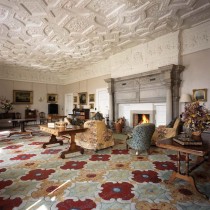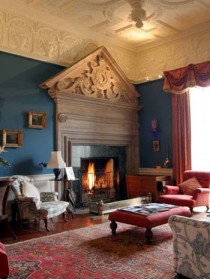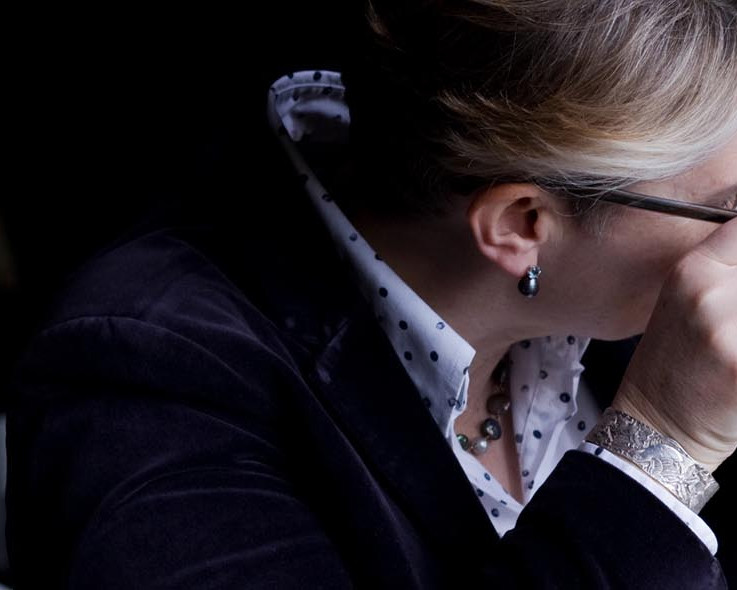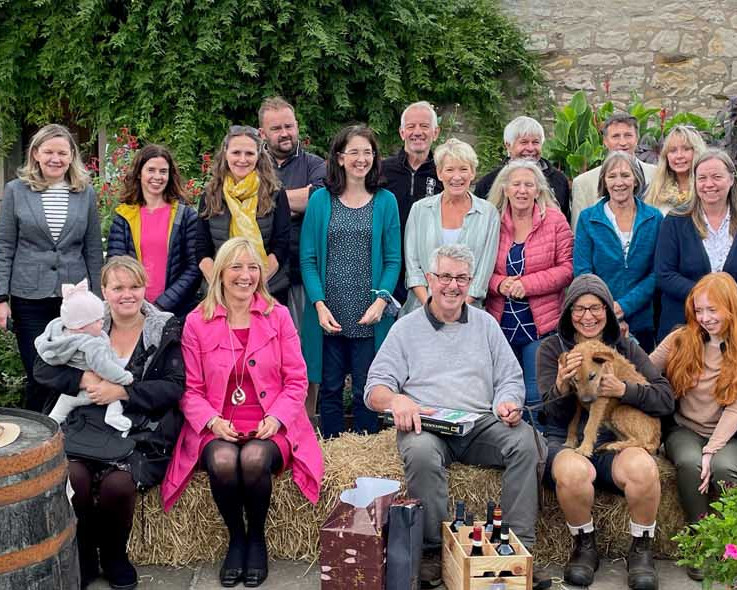
Can a masterpiece of Scottish Renaissance architecture accommodate a 21st-century family without bankrupting them? Sir Francis Ogilvy, owner of Winton House, is determined to try.
Words by Anna Burnside. This feature was published in Homes & Interiors Scotland in September 2011 and they have kindly given their consent for its publication here.
During the Ogilvy family’s recent summer holiday in France, they visited Disneyland, the Louvre and the Palace of Versailles. Pluto and Goofy passed unremarked but some of the paintings rang a bell. “In the Louvre we passed a Van Dyck and thought, that looks familiar,” says the head of the family. It was. It’s the partner of one that hangs in the front hall. Then another Dutch landscape mysteriously transported them back to East Lothian. Sure enough, it was a Jan van Goyen, similar to the one in the library. Sir Francis Ogilvy, the 14th Baronet of Inverquarity, has not lost his sense of wonder at these things. “In the Louvre. Wow.”
For Ogilvy, who grew up around Dutch Masters and waved to ancestral portraits while sliding down the banisters, it’s the juxtaposition that was a surprise. It was like seeing that well-washed Asda teatowel, complete with indelible curry stain, on display in the Conran Shop. For him, Van Dycks and Van Goyens – to say nothing of Raeburns and Canalettos – belong at home, not in an art gallery.
“WE WERE GOING TO INSTALL ORNATE IRON RADIATORS – BUT WHO LOOKS AT THE RADIATORS WHEN THERE ARE VAN DYCKS ON THE WALLS?”
As homes go, this one is pretty special. Ogilvy, his music teacher wife Dorothy and their four children live in Winton
House, a Grade-A listed building between Tranent and Pencaitland in East Lothian. With its extraordinary twisted chimneys and immaculately ornate plaster ceilings, it’s one of the best examples of Renaissance architecture in Scotland. It has been the Ogilvy family home for three generations and, under one of the most distinctive roofs in Scotland, life continues as normal.

As normally as it possible to live in a house that eats money, that is. Ogilvy’s parents were driven out by dry rot when he was 12. An only child, he knew even then that the house would become an important part of his life, and when he moved back in, after his wedding16 years ago, the path was set. “I chose to study rural land management as I knew I wanted to be involved in the countryside. I trained as a surveyor, found a practice in East Lothian called Chalmers & Co and took it over 12 years ago.”
The newlyweds settled in a corner of the tower, which is still the heart of the family’s living quarters. (As the Baronet puts it with his disarming self-deprecating sense of humour, “We live in a first floor flat.”) While not exactly a Barratt starter home, it is on a more manageable scale than Winton’s grand public areas. Thanks to Elspeth, Hamish, Calum and Robert, who range in age from six to twelve, the kitchen is decorated with the kind of artwork that doesn’t demand a heavy gilt frame. There is even a vaguely ethnic metal sculpture from John Lewis. Outside in the stairwell, ancient grandees frown on rucksacks, a tiny lilac hairbrush and a Spongebob Squarepants comic, as if they disapprove of the flotsam and jetsam of 21st-century life.
Although the estate, with five farms producing oats, wheat, barley and cattle, helps to support the house, what Ogilvy calls “the fancy rooms” have to earn their keep. Winton itself is used for dinners, weddings, corporate team building training days and whatever 21st-century people want to do in a magnificent historical mansion, including just living in it for a few days. “My children have grown up trying to sleep with bagpipes playing outside their bedrooms,” he says.
“Two or three times a week I come home from work, put the kids to bed, put on my kilt and go out and meet 20 Austrians for the first time. I say to them, ‘This is my house all the time but for tonight it’s your house too.’ It pleases me to see it used and enjoyed.”
This has been his generation’s innovation. “Corporate hospitality was not a thing of the 1950s. It’s not straightforward to find a use for a 500-year-old house. This is one answer. The house may be used for something entirely different in the future. We want to ensure that it’s kept up to a certain standard and that it’s flexible, to allow different uses to come and go while maintaining the fabric and contents of the house. Besides, it’s far too big for one family to hoard. It was made for entertaining people.”
The original Winton House was built by the Seton family in 1150 and then torched by Henry VIII in a vain attempt to impress Mary Queen of Scots. If they hadn’t already got the message, the Setons backed the wrong side in the Jacobite rebellion of 1715. The Earl of Winton was taken to the Tower of London and Bonnie Prince Charlie commandeered the estate in 1745, setting up camp there.
When the Hamilton Nisbets bought Winton in 1779, it was not in its best shape. Happily, they brought the wealth of two of Scotland’s best established families with them to East Lothian and began filling the house with the finest furniture, carpets and paintings that Europe and the Ottoman empire could provide. As the house passed through the family – used mainly as a second home – it was enlarged and ‘modernised’. Woodlands were planted. One owner, Mary Nisbet, held a party for 800 to celebrate Queen Victoria’s jubilee.
The Ogilvys arrived in 1888, when advocate Henry Ogilvy married into the family. He was a keen curler, and his stones are still holding doors open around his former home. Then, in 1920, when the house passed to his nephew Gilbert, Winton under went a category change. Francis Ogilvy’s grandfather arrived with his wife and three children, soon to be joined by two more. At last there was a proper family to climb the trees, torment the gardeners and play hide-and-seek in the cellars and closets.
His own children’s experience is more sociable than Ogilvy’s own more solitary childhood. “For them it’s a massive playground – albeit with plenty of no-go areas.” Snowed in at New Year, they made hockey sticks out of newspapers, found a foam ball and converted the dining room – which has a smooth floor for dancing – into a hockey pitch. They spread out around the house to practise their pianos, violins and drums. When that’s over, they rollerblade around the basement.

Living in a “national treasure” is, says Ogilvy, a constant balancing act. There is always a decision to be made. When they installed central heating, the family considered ornate iron radiators. Then they changed their mind. “Who looks at the radiators when there are Van Dycks on the wall?”
Sometimes the doors are thrown open, as in the 25th September for the Lammermuir music festival, and at other times they are firmly closed. “A couple of years ago Dorothy said it felt as if the family home was now in the venue rather than the other way around, signalling a need for change. We don’t want the place to burn out and I don’t want to
burn out.”
Those lucky guests who come and use the house for a week can live in the style of Winton’s earlier inhabitants. “They walk for miles and miles, sit in front of the fire, soak up several centuries of history as if they have all the time in the world to do their crochet. We don’t have time to do that. But the people who spend hours and hours to make the place look nice love to know that their hard work is appreciated.”

